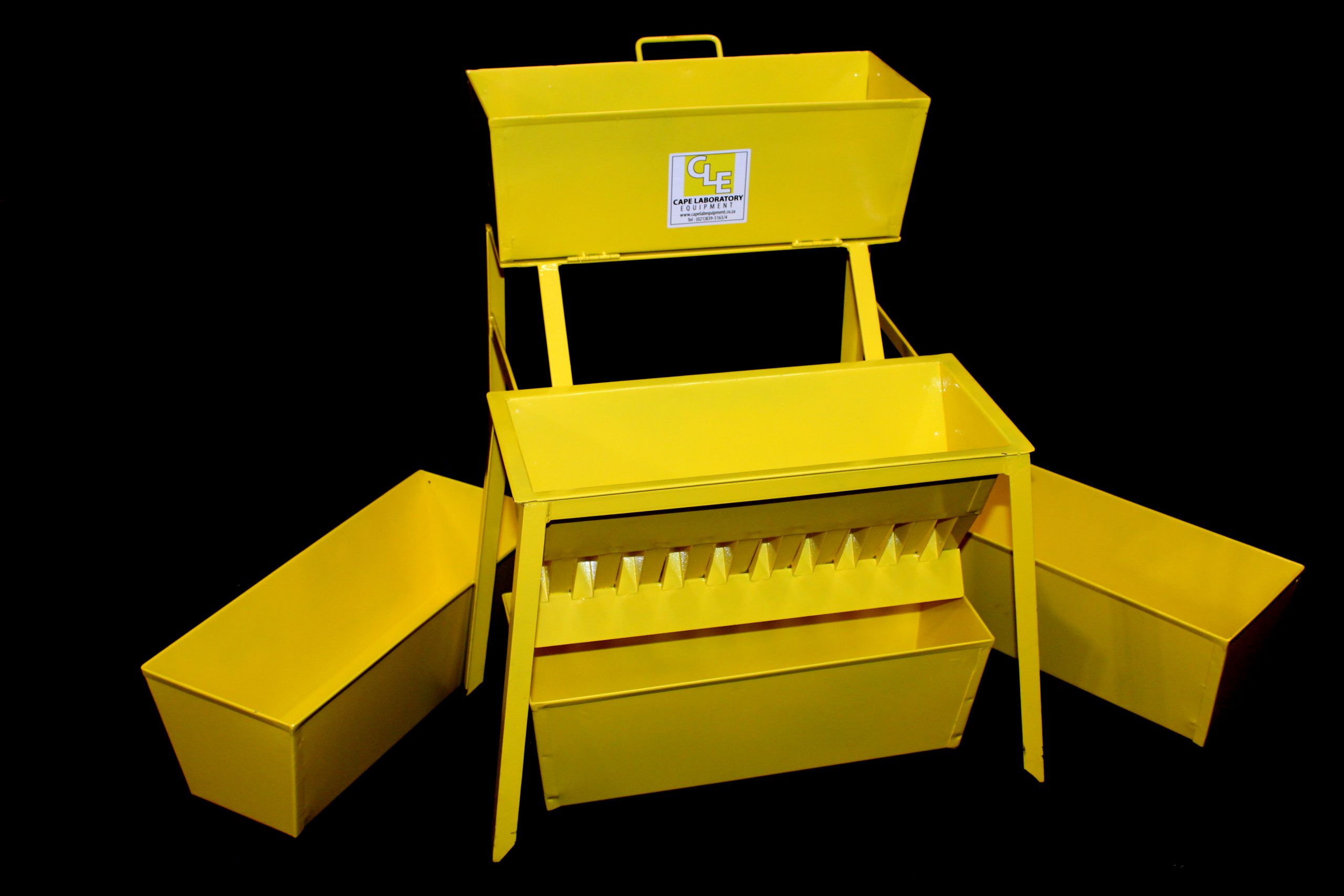Soils & Gravel
Sampling & Testing Procedures

Sampling Procedures and Techniques.

Health & Safety during Sampling and Testing
The understanding of Soil / Sand / Gravel Properties.

Practical In-Lab Experience & Assessments.

Correct use of Soil Testing Equipment.

Sampling of soils and gravels for testing
Days: 3 (+ 2 Weeks Workplace Practical)
Overview:
Soil and gravel are fundamental materials in construction and engineering projects, influencing the stability and performance of infrastructure. Ensuring the quality and characteristics of these materials is crucial for the success of any construction endeavor.
In this guide, we will walk you through the essential procedures for sampling soil and gravel to obtain accurate and representative samples for testing. Proper sampling is the foundation of reliable data, allowing engineers, contractors, and project managers to make informed decisions and meet industry standards.
Importance of Proper Sampling: The guide begins by emphasizing the significance of determining the number, size, and type of samples required for each test. Understanding why soils are vital in construction and recognizing the reasons for their use is essential for grasping the importance of proper sampling.
Testing Methods:
We will explore various Sampling Methods for testing materials, including: Sampling for Pavement Layers:
- Implementing random sampling techniques for Quality Control in Road Construction.
Determination of Sample Size and Sample Density:
- Understanding how to determine the appropriate sample size and density for accurate testing.
Sampling from a Sampling Pit in Natural Gravel, Soil, and Sand:
- Learning the procedures for obtaining samples directly from natural deposits of gravel, soil, and sand.
Sampling of Stockpiles:
- Understanding the sampling process for materials stored in stockpiles to assess their quality and characteristics.
Sampling Techniques: You’ll learn about different sampling methods for natural gravel, soil, and sand, as well as sampling from stockpiles. The guide will provide insights into the division of samples by quartering, ensuring the samples are representative of the material being tested
Safety and Quality Assurance: Safety is a top priority during sampling procedures, and we’ll discuss how to identify and address occupational health and safety hazards. Moreover, adhering to industry norms, standard testing methods, and project specifications ensures quality assurance in the sampling process.
Labeling and Transport: Proper labeling of samples is crucial for traceability and identification. We’ll guide you on labeling containers according to organizational requirements. You’ll also learn about the essential steps to transport the samples safely to the laboratory under supervision.
By the end of this guide, you will have a solid understanding of the critical role soil and gravel sampling plays in construction projects. Armed with this knowledge, you’ll be equipped to execute accurate and reliable sampling procedures, ensuring the success and integrity of your projects.
Join us on this journey of Soil & Gravel Sampling Procedures, and let’s work together to build a safer, more sustainable, and resilient built environment.
Learners found Competent will be capable of the following
- Determine the quantity, Size, and specifications of samples required for each test.
- Identify the specific soils and gravels to be sampled for testing purposes.
- Prepare the soils and gravels intended for sampling in accordance with the required procedures.
- Implement the appropriate sampling techniques for obtaining representative soil and gravel samples for testing.
- Ensure proper labeling and safe transportation of the collected soil and gravel samples.
Particle Size Analysis & Plasticity of Soils
Days: 3 (+ 2 Weeks Workplace Practical)
Overview:
Particle Size and Plasticity Testing of Soils and Gravels. In this course, we will explore the importance of soils and the critical role they play in construction projects. Understanding the significance of proper material testing is essential to ensure the safety, stability, and durability of structures.
Throughout the course, we will delve into various testing methods, including wet preparation and particle size analysis, dry particle size analysis of gravels and sands, and air-drying of samples for plasticity index and hydrometer tests. Additionally, we will cover the determination of the one-point liquid limit, plastic limit, plasticity index, linear shrinkage, the liquid limit with the two-point method, and the flow curve liquid limit.
To ensure accuracy and adherence to standards, we will discuss the necessary steps for preparing sampled materials, including the marking, labeling, and referencing of samples. Moreover, we will guide you through the proper execution of laboratory tests, from apparatus preparation and calibration to identifying occupational health and safety hazards.
Throughout the course, we will provide practical tips and techniques for achieving reliable results. Join us on this learning journey as we equip you with the knowledge and skills needed to excel in material testing, ensuring the success of your construction projects. Let’s build a solid foundation for a safer and more resilient future together.
Learners found Competent will be capable of the following
- The preparation of soil and gravel construction materials for testing samples.
- Verification and Calibrations of Testing Equipment
- Carrying out laboratory tests on soil and gravel construction materials according to Standard Methods.
- Recording and storing test readings related to soil and gravel construction materials.
Testing of MDD & CBR
Maximum Dry Density
&
California Bearing Ratio
Days: 3 (+ 2 Weeks Workplace Practical)
Overview:
Determination of Maximum Dry Density (MDD) and California Bearing Ratio (CBR) in civil engineering testing. In the realm of construction and infrastructure development, understanding the properties of construction materials is vital for building safe and durable structures. The MDD and CBR tests are fundamental in assessing the engineering characteristics of soil materials.
This guide is designed to take you through the process of planning the execution of testing, understanding various sampling and test methods, and acquiring the necessary resources and equipment for the tests. We will delve into the details of preparing sampled materials for testing, ensuring proper labeling and referencing of samples to maintain accuracy and traceability.
The heart of this guide lies in the determination of Maximum Dry Density (MDD) and California Bearing Ratio (CBR). These tests play a critical role in evaluating the compactibility, strength, and load-bearing capacity of soil materials, making them indispensable in the field of civil engineering.
As we progress, you will learn how to execute laboratory tests with precision and in accordance with standard methods. The apparatus will be prepared and calibrated to ensure consistent and reliable results. Under proper supervision, test readings will be recorded and stored meticulously, facilitating a comprehensive analysis of the test outcomes
By the end of this guide, you will have gained a thorough understanding of the MDD and CBR tests, empowering you to make informed decisions in civil engineering projects. Whether you are a construction professional, civil engineer, or student, this knowledge will equip you with the tools to excel in the field of materials testing and engineering.
Join us on this enlightening journey as we explore the intricacies of Determination of Maximum Dry Density (MDD) and California Bearing Ratio (CBR) and unlock the secrets to building resilient and structurally sound infrastructures. Let’s pave the way to a future where precision and expertise lead to safer and more sustainable construction practices.
Learners found Competent will be capable of the following
- The preparation of soil and gravel construction materials for testing samples.
- Verification and Calibrations of Testing Equipment
- Carrying out laboratory tests on soil and gravel construction materials according to Standard Methods.
- Recording and storing test readings related to soil and gravel construction materials
Testing of UCS & ITS
Unconfined Compressive Strength
&
Indirect Tensile Strength
Days: 3 (+ 2 Weeks Workplace Practical)
Overview:
Unconfined Compressive Strength (UCS) and Indirect Tensile Strength (ITS) testing in civil engineering.
In the world of construction and materials testing, understanding the mechanical properties of cementitious stabilized materials is essential for ensuring the quality and stability of infrastructure projects.
This guide will take you through the process of planning and executing testing, exploring various test methods, identifying necessary resources and equipment, and preparing sampled materials for testing. Emphasizing the importance of adhering to standardized procedures for accurate and reliable results.
The heart of this guide lies in the determination of Unconfined Compressive Strength (UCS) and Indirect Tensile Strength (ITS) of laboratory-mixed cementitious stabilized materials. These tests play a crucial role in assessing the mechanical strength and durability of materials used in construction.
As we proceed, you will learn how to execute laboratory tests, ensuring that the apparatus is prepared and calibrated according to standard methods. Under proper supervision, test readings will be recorded and stored systematically, facilitating a comprehensive analysis of the test outcomes.
By the end of this guide, you will have a profound understanding of Unconfined Compressive Strength (UCS) and Indirect Tensile Strength (ITS) testing, equipping you with the expertise to make informed decisions in civil engineering projects. Whether you are a construction professional, civil engineer, or student, this knowledge will empower you to uphold the highest standards in materials testing and engineering.
Join us on this enlightening journey as we explore the intricacies of Unconfined Compressive Strength (UCS) and Indirect Tensile Strength (ITS) testing, and discover how these tests contribute to the creation of resilient and structurally sound infrastructures. Together, let’s build a future where precision and proficiency lead to safer and more sustainable construction practices.
Learners found Competent will be capable of the following
- The preparation of soil and gravel construction materials for testing samples.
- Verification and Calibrations of Testing Equipment
- Carrying out laboratory tests on soil and gravel construction materials according to Standard Methods.
- Recording and storing test readings related to soil and gravel construction materials
Soil & Gravel Equipment















